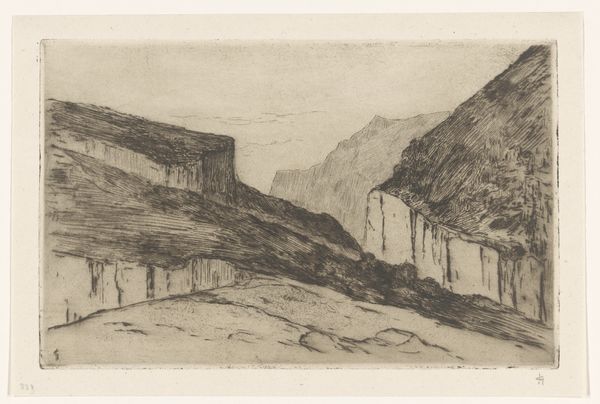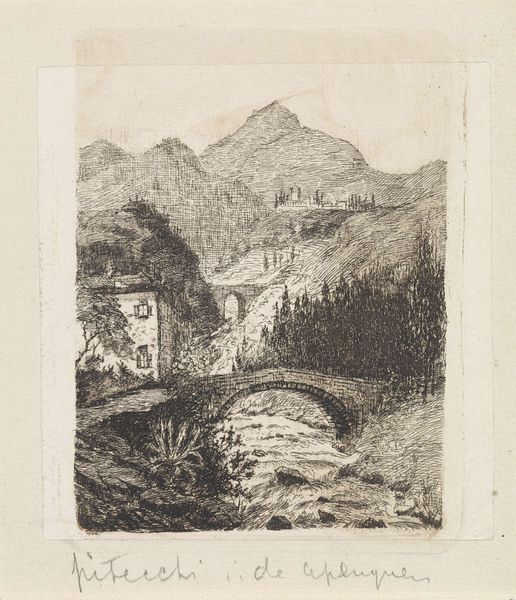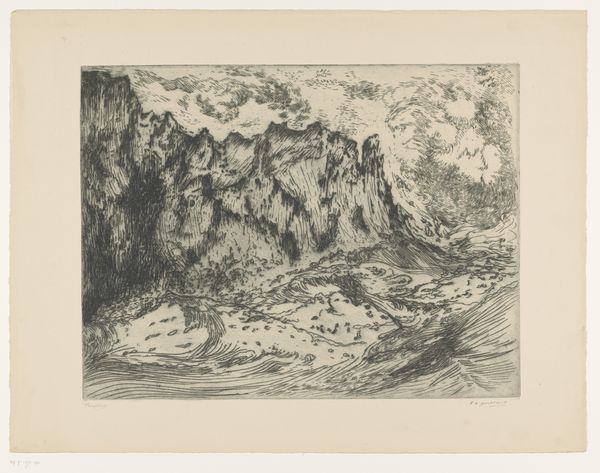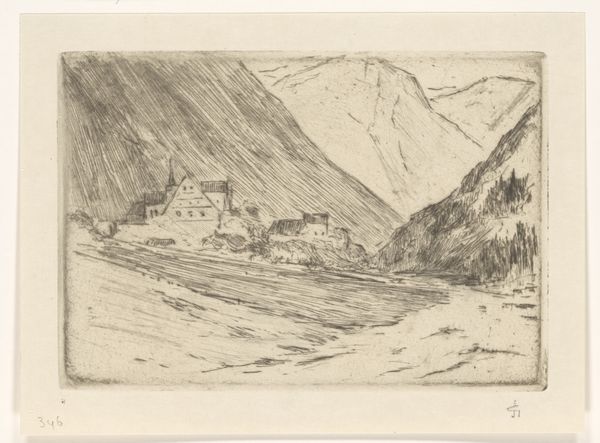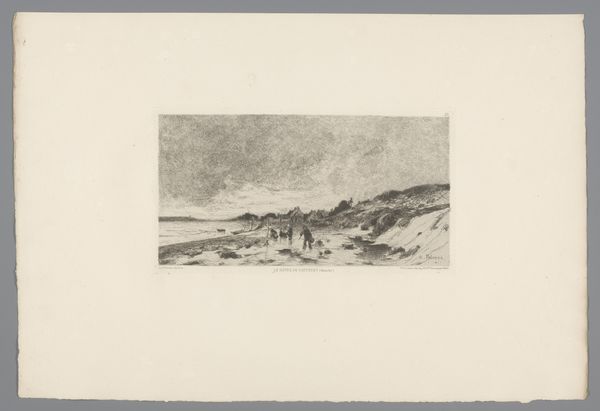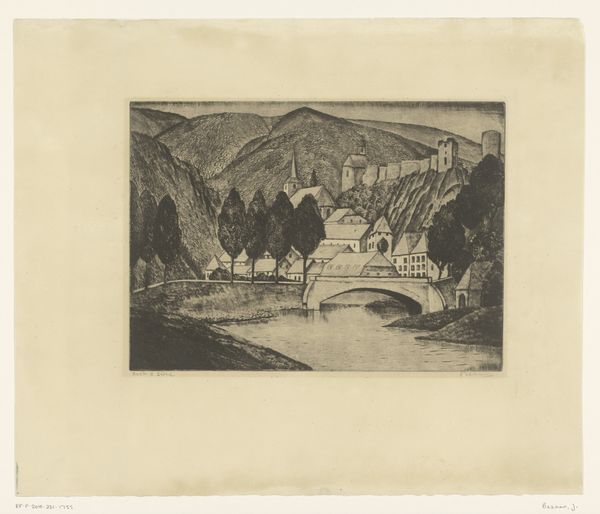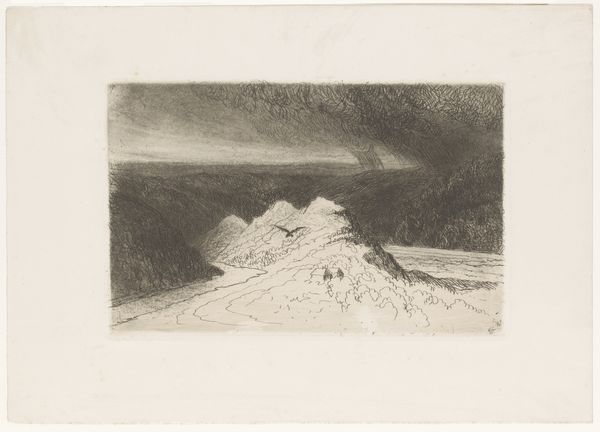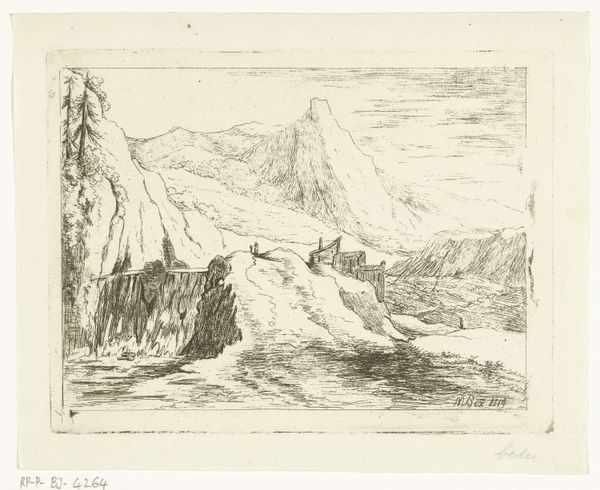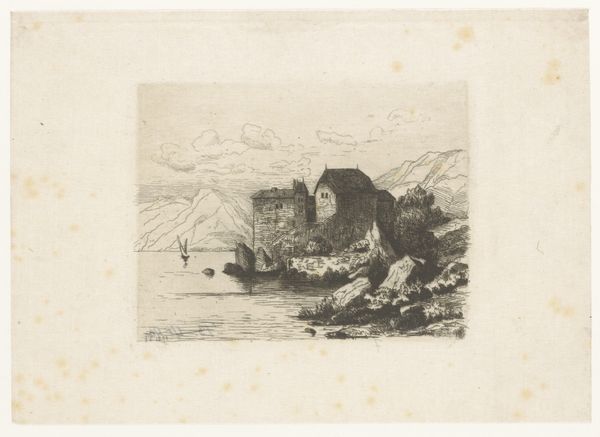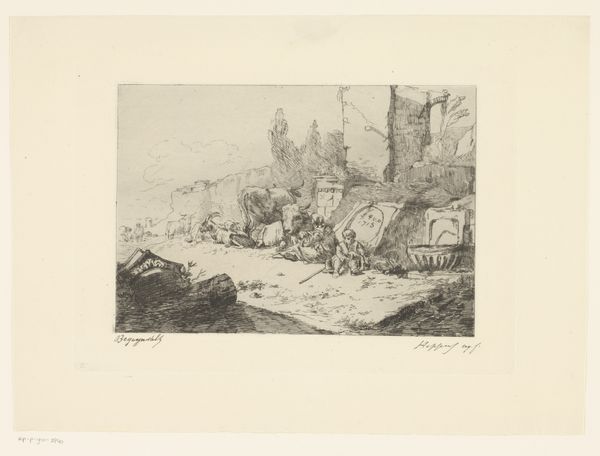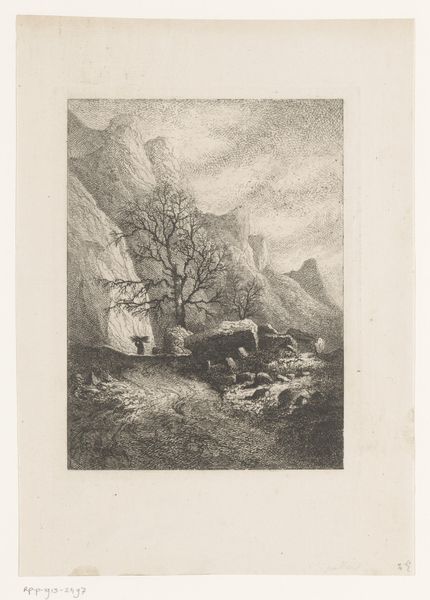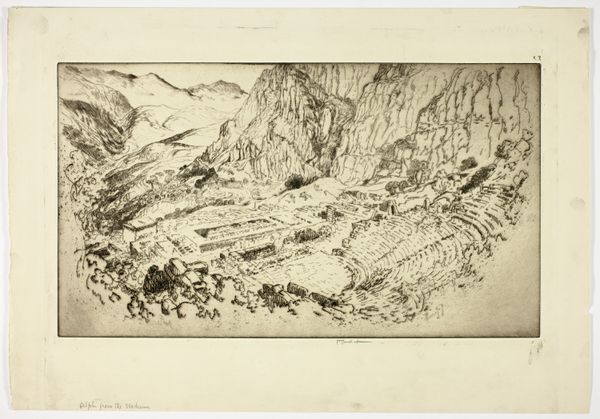
graphic-art, print, etching
#
graphic-art
# print
#
etching
#
landscape
#
monochrome
Dimensions: height 263 mm, width 340 mm
Copyright: Rijks Museum: Open Domain
Curator: Looking at "Huis op een berg," or "House on a Mountain," a 1922 etching by Henri Braakensiek, the first impression is undeniably stark. A solitary structure against an imposing landscape. Editor: Yes, immediately I get a feeling of isolation, even vulnerability. That little house seems perched precariously on the rocks, as if it could be swallowed by the mountain at any moment. The lines are so harsh, the shading so unforgiving. It gives off an air of stark simplicity. Curator: Exactly. The composition itself reinforces that sentiment. The house, a rectangular form, is dwarfed by the towering, almost oppressive, verticality of the mountain. Notice the contrast in textures as well. The smooth planes of the house juxtaposed against the rugged, irregular surfaces of the rock formations. Editor: And that contrast extends to the light as well. The house seems almost bleached by the sun, whereas the mountain retreats into shadow. It's like a struggle between order and chaos, the man-made against the overwhelming force of nature. There's a sort of primal angst in its monochrome rendering. Curator: A very astute point. The use of etching as a medium allows for precisely that level of detail and contrast. Braakensiek's mark-making becomes crucial; short, decisive lines to delineate the rocky terrain, longer, more flowing lines to suggest the immense scale of the mountain. This evokes depth and an overwhelming atmosphere with so few tones. Editor: It's fascinating how a simple image of a house can evoke such a sense of unease. It really goes to the idea that humans seek out to control and define a place for themselves, no matter how grand or strange that territory can be. But the composition does quite cleverly create an emotion beyond just what you see depicted on its surface. I wonder what compelled Braakensiek to make such an image? Curator: The social and political climate of the 1920s were of great turmoil and change. The post-war mentality might lead artists like Braakensiek to represent feelings of alienation in simple, evocative imagery. Editor: I think for me this speaks to the enduring power of minimalist imagery and how impactful they can be when thoughtfully applied to our emotions. Curator: I agree, its evocative composition encourages a multitude of reflections on themes of solitude and the sublime power of nature. Editor: Ultimately, “House on a Mountain" is a striking depiction of stark landscapes and evokes feelings of solitude.
Comments
No comments
Be the first to comment and join the conversation on the ultimate creative platform.
